Meet the World’s First Twin Turbocharged Dodge Challenger SRT® Demon 170
We recently introduced you to 3 Demons Performance and their unique program which will showcase a quartet of 2023 Dodge Challenger SRT® Demon 170s at automotive events to raise money for veteran’s charities and children’s charities. Each of their four SRT Demon 170s has a unique role in the program, with some serving as show cars and ride-along cars while another will be used as a serious racecar. That serious racecar is finished in stunning Go Mango, and it is the first 2023 Challenger SRT Demon 170 in the world to be fitted with a twin turbocharger setup.
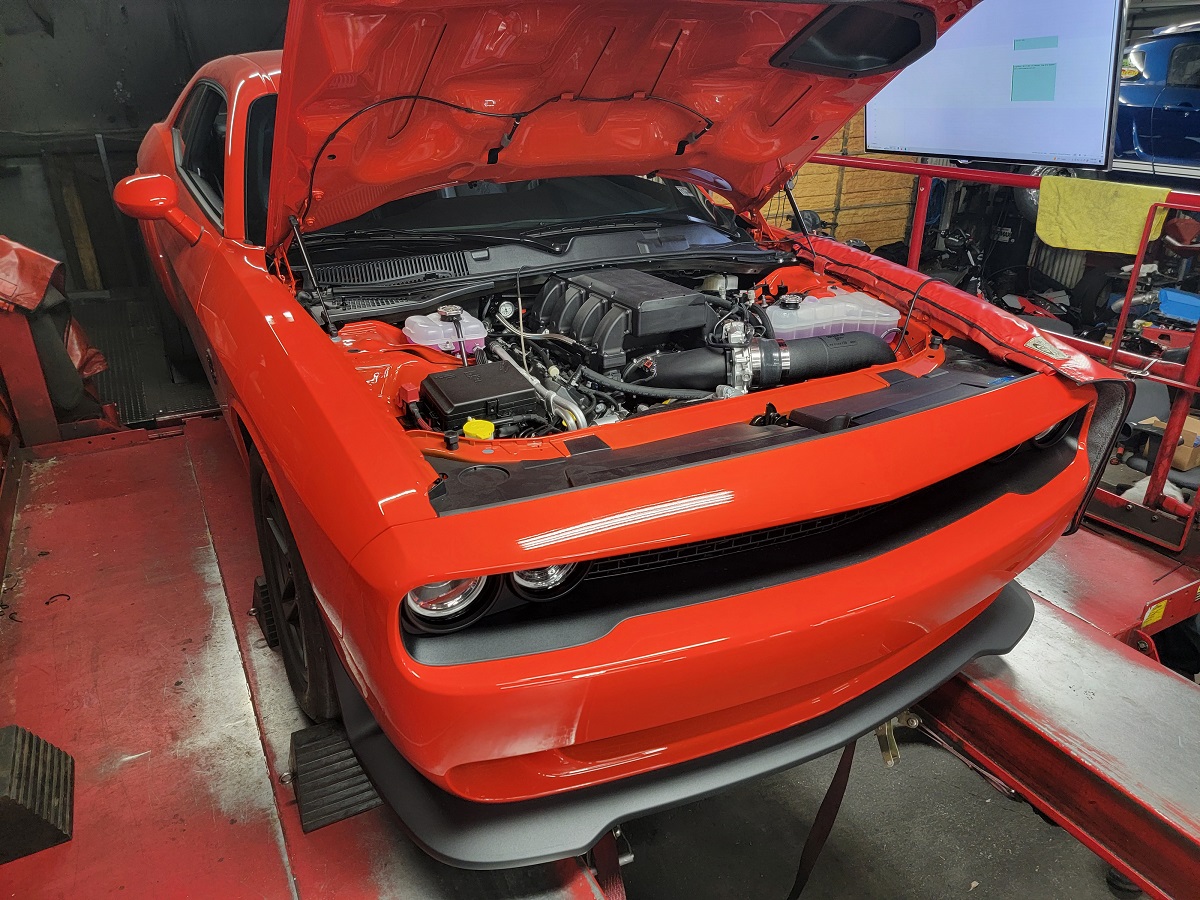
The 2023 Dodge Challenger SRT Demon 170 comes from the factory with a 6.2-liter HEMI® V8 engine that is fed by a 3.0-liter IHI supercharger to deliver 1,025 horsepower when running on E85 ethanol. That affords the SRT Demon 170 8-second quarter-mile times – which are more than fast enough for many people – but the team at 3 Demons Performance wants to get down the track even quicker. To achieve that goal, they turned to John Urist of Hellion Turbo for a big boost in power. We had a chance to talk with John Urist, owner and founder of Hellion Turbo, and he provided us with all of the details on the world’s first turbocharged 2023 Dodge Challenger SRT Demon 170.
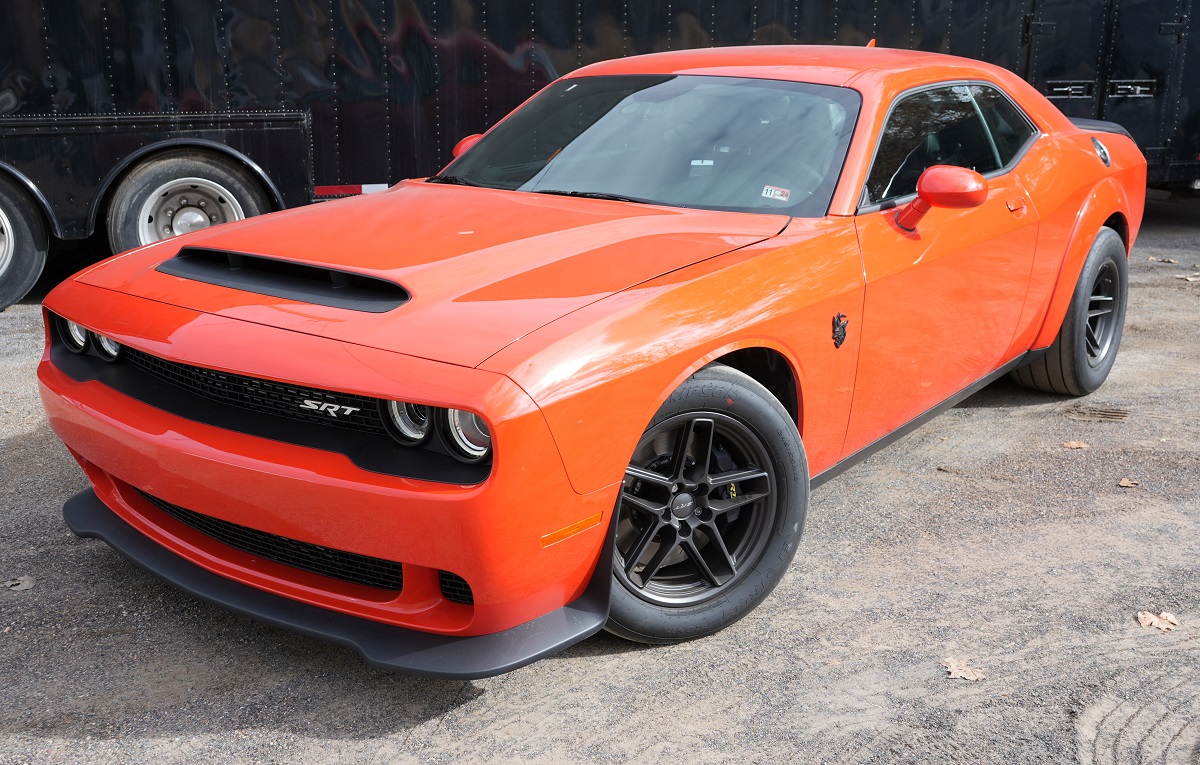
Before we get into the nuts and bolts of this build, we will start by answering the question that every reader wants to know – how much power is this beast producing? In stock form, Dodge Challenger SRT Demon 170 #0444 made 923.88 horsepower and 878.07 lb-ft of torque at the rear wheels. With the Hellion twin turbo setup, the output climbed to 1,275.23 horsepower and 1,204.46 lb-ft of torque at the rear wheels – improvements of over 350 horsepower and 325 lb-ft of torque at the wheels. Those are impressive numbers, but making them even more impressive is the fact that the Hellion Turbo didn’t have to change many items to reach those elevated numbers.
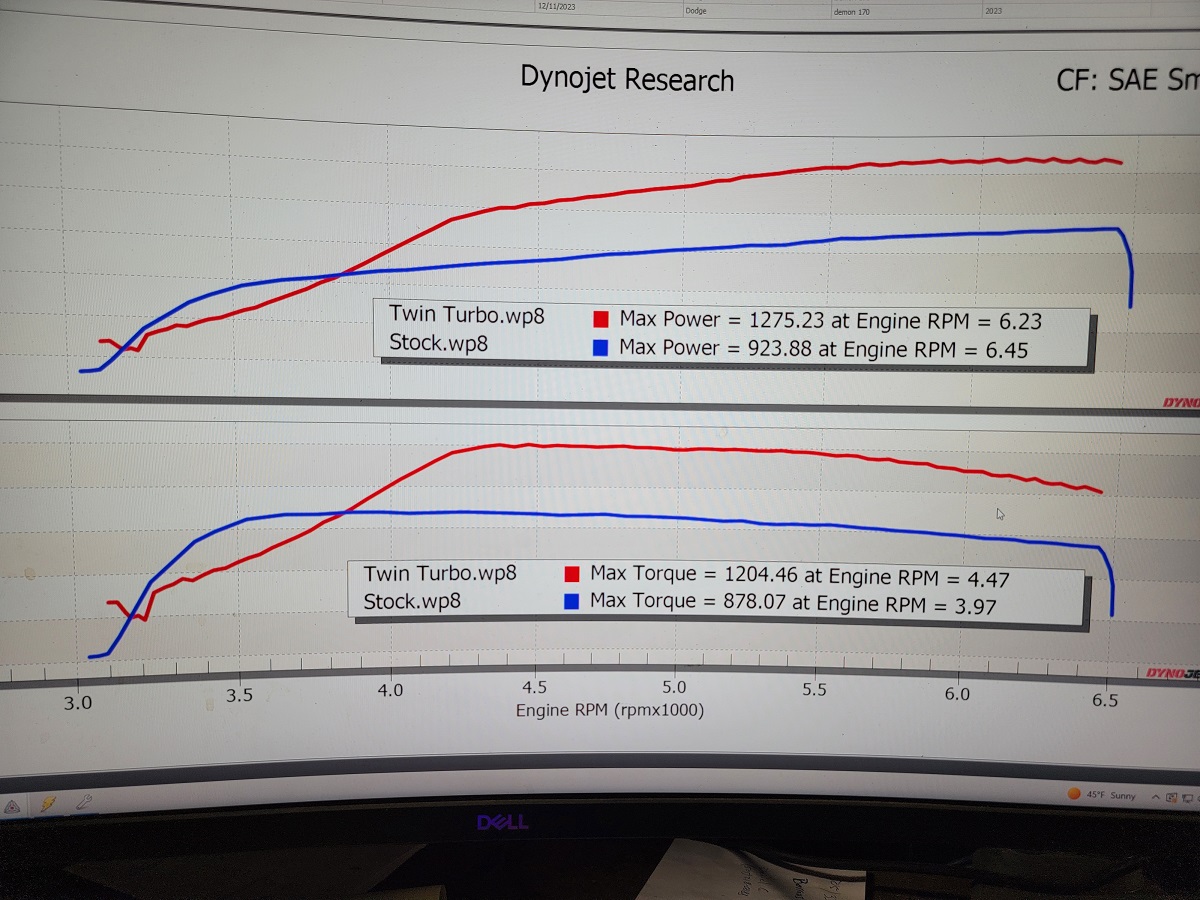
When Dodge Challenger and Charger owners go to a turbocharged induction system on a car that came from the factory with a supercharger, the vehicle’s owner needs to decide whether they want to incorporate the turbochargers to work with the factory supercharger or if they want to remove the supercharger to make room for an intake manifold. In the case of this Hellion build, the team removed the 3.0-liter IHI supercharger and replaced it with an intercooled intake manifold from Demon Performance. To be clear, Demon Performance is a well-known performance shop in South Carolina and they are not associated with the 3 Demons Performance racing team – but the Hellion package on this SRT Demon 170 does use the Demon Performance intake manifold that has become popular with many modern Dodge owners who are switching from a supercharger to turbochargers.
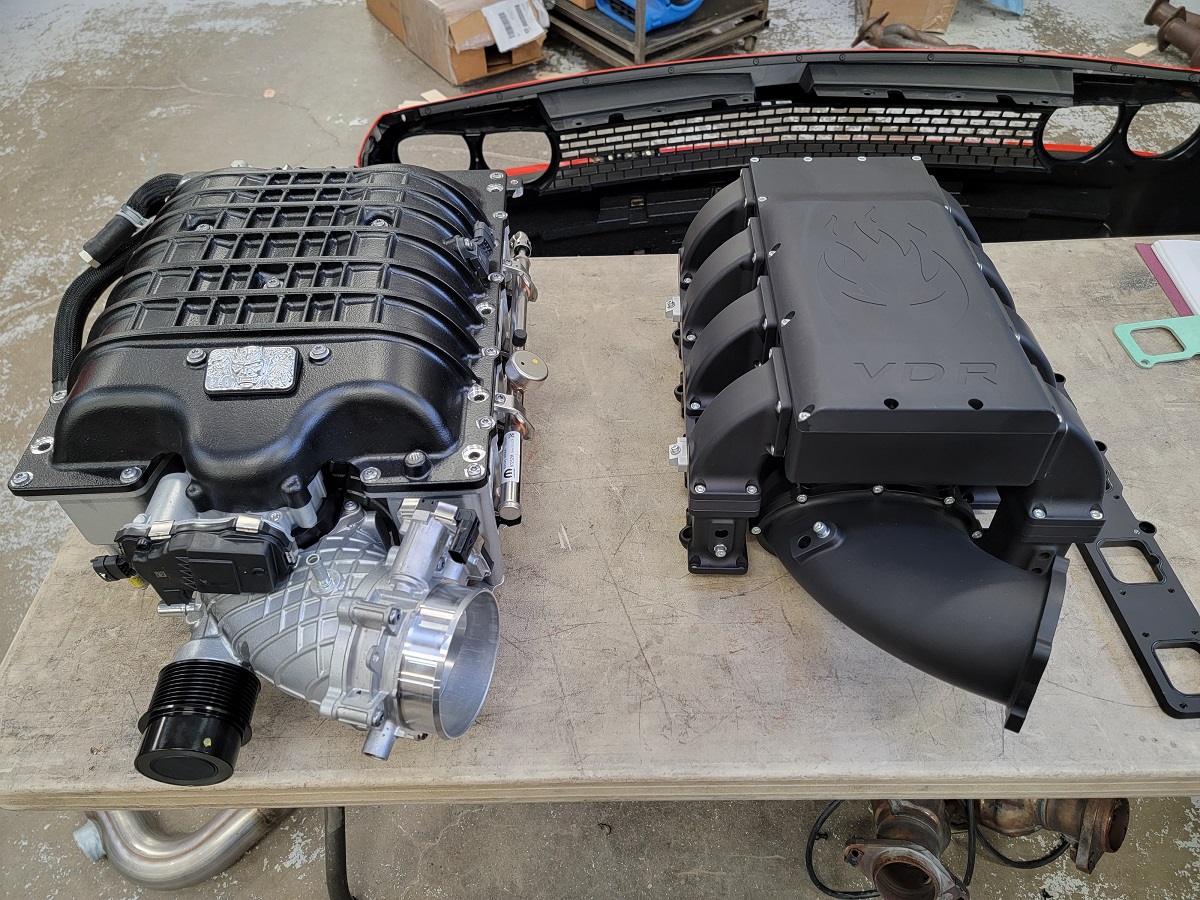
“Basically, we started with our tried and true Demon/Redeye turbo kit and started the installation. We discussed that we wanted to make the most power possible, stock engine or built. With that in mind, removing the factory supercharger and installing an intercooled Demon intake was the best option and a go-to for us when it comes to big power,” said Urist. “We started with our install, and luckily our turbo kit parts fit with no cutting or modifying – very important for a vehicle like this. Purists can rest at ease, we do not change anything that can’t be put back to stock. All of the parts that were removed have been tagged, bagged and boxed to keep with the car. The Demon intake is a bolt-on, and we connected the factory chiller lines to it so it runs as designed. The harmonic balancer stays stock, we just simply remove the blower and belt. In our experience, this is worth well over 100+ horsepower, as these big blowers have parasitic drag. With this removed, we have eased up on the load the engine sees when making power. So not only do we get more rear wheel power, we take load off the engine, a win/win when keeping an engine stock. We had a great installation session in our R&D area, only a few changes needed to have a ‘perfect fit’ system.”
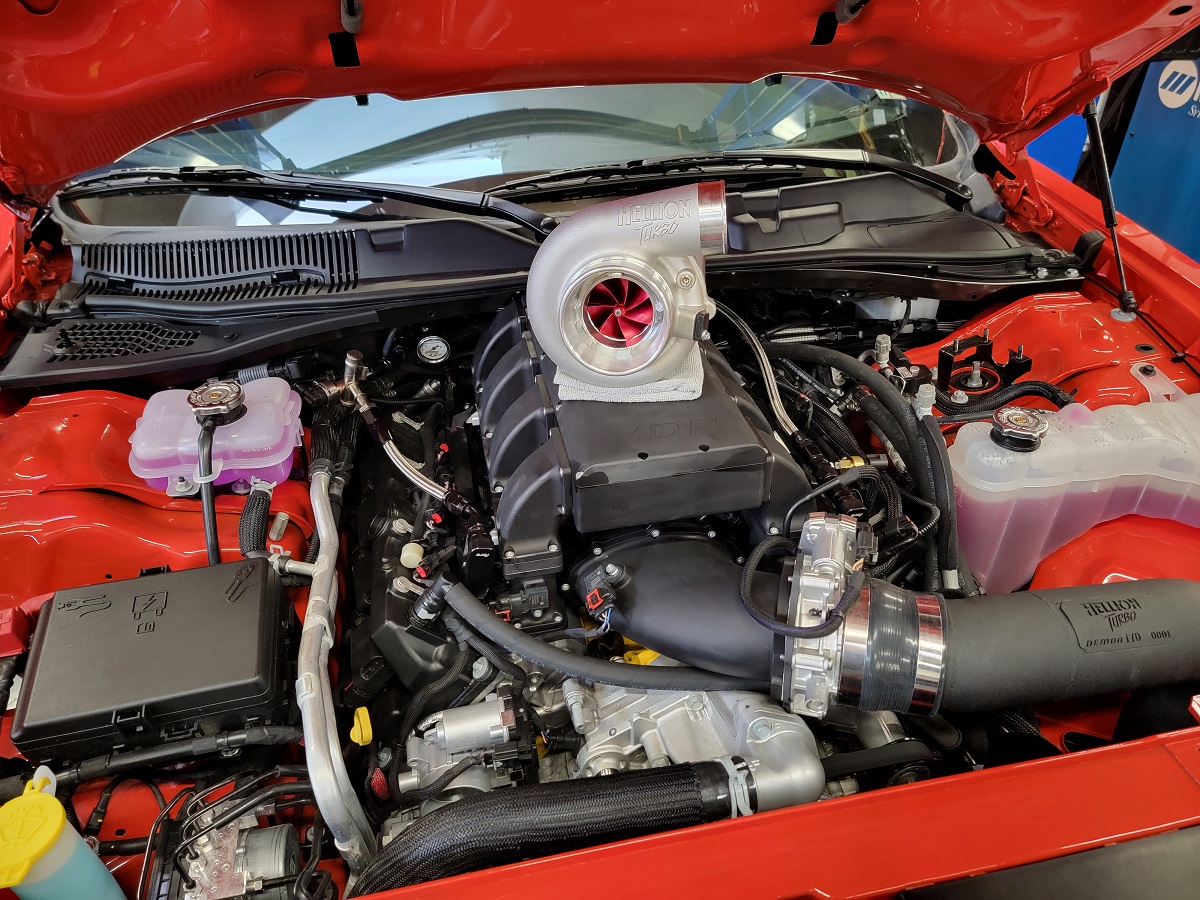
The main component of this build is a pair of Hellion 64/66 T4 turbochargers, which have been used in builds that delivered over 1,700 horsepower with very little spool time. As Urist puts it, “the days of turbo lag are gone!”
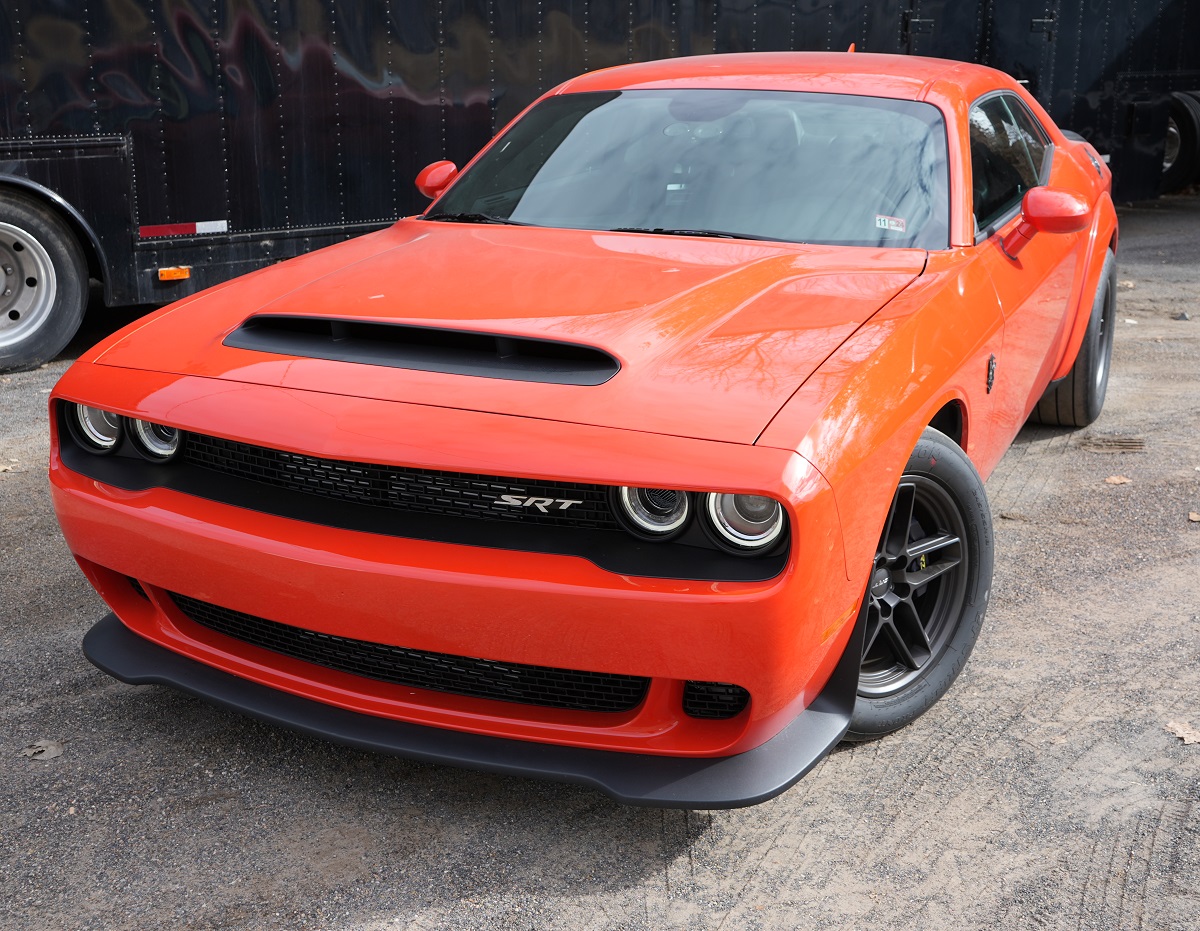
Next, the team at Hellion Turbo looked at the stock fuel system of the 2023 Dodge Challenger SRT Demon 170, and while it was not necessary, they decided to run Fore fuel system components.
“The stock fuel system is amazing, and it has a larger feed line to handle the demands of E85. This is enough to fuel a turbo-only build to an even higher HP level than a stock blower,” said Urist. “We talked about leaving it stock and testing its limits, but in the end, we opted for a full Fore triple pump setup to be able to fuel big power right off the bat.”
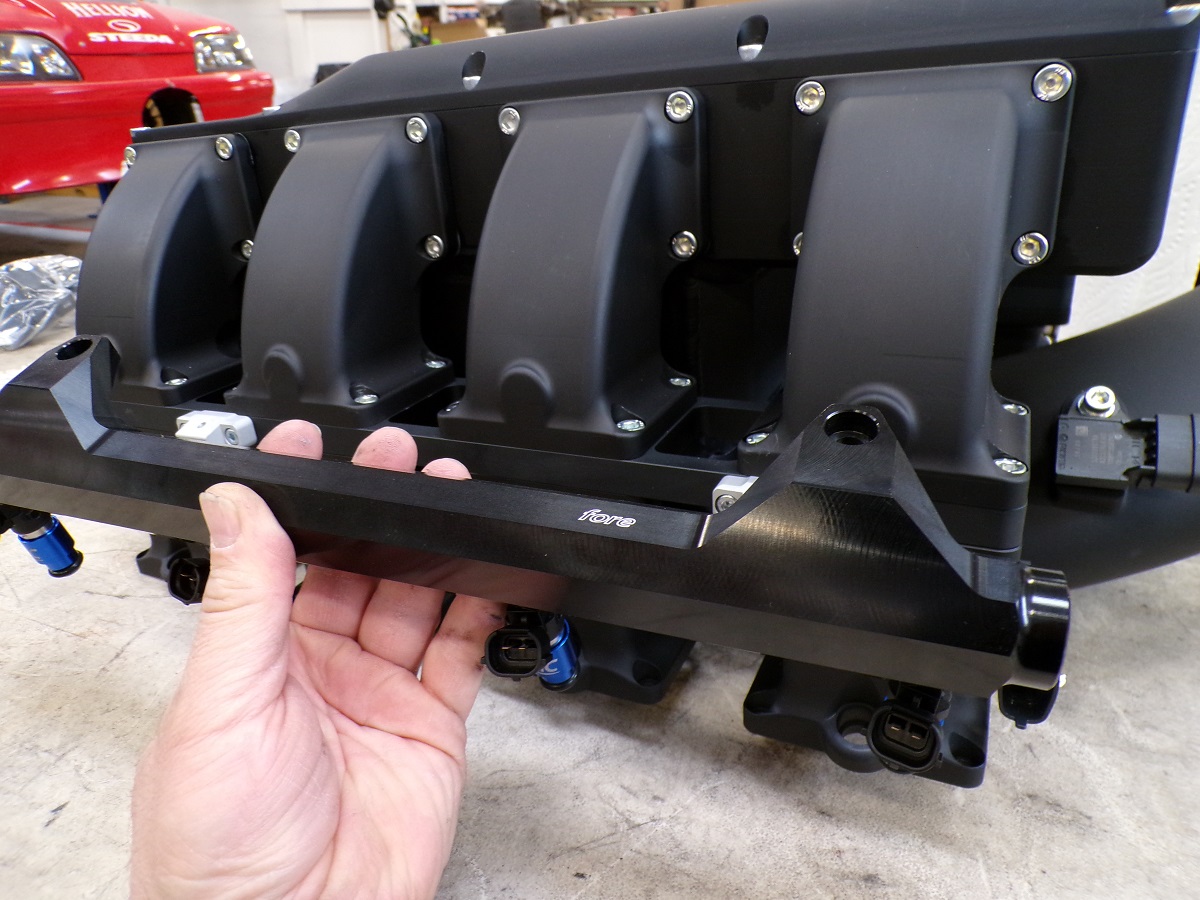
There are a few obvious advantages of making the switch from a supercharger to the Hellion twin turbo setup. As Urist mentioned, the engine effectively uses about 100 horsepower just to spin the supercharger, so even when boost levels are similar, the turbocharger system removes the parasitic loss that comes with every belt-driven supercharger. Next, the IHI supercharger weighs 114.5 pounds while the Demon Performance intake manifold weighs just 37.5 pounds, so it removes quite a bit of weight from the engine area. Some of that weight is countered by the charge piping and the turbochargers, but overall, the twin turbo system does cut some curb weight from the SRT Demon 170. Finally, the turbo setup allows for much easier boost control, leading to the ability to add boost at the push of a button rather than changing pulleys on a supercharger.
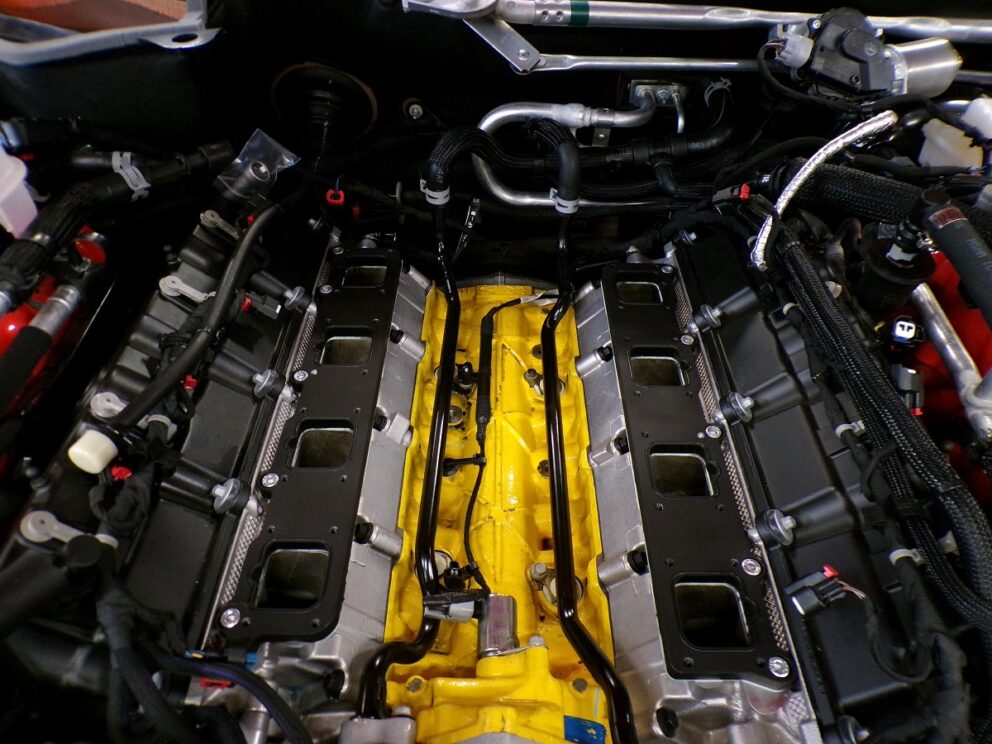
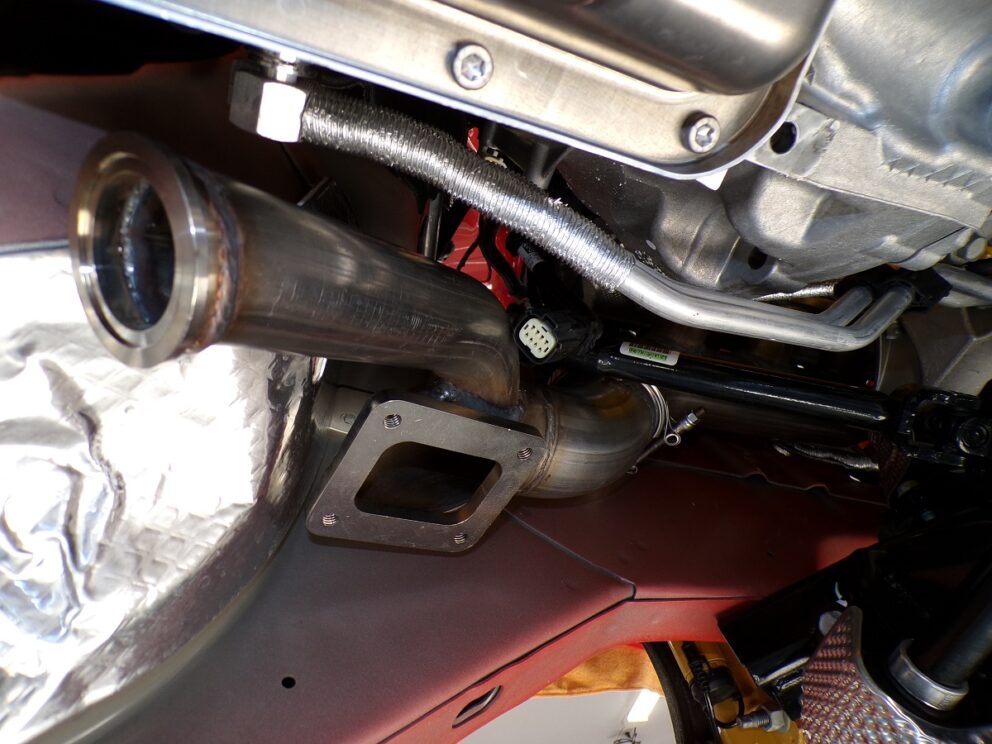
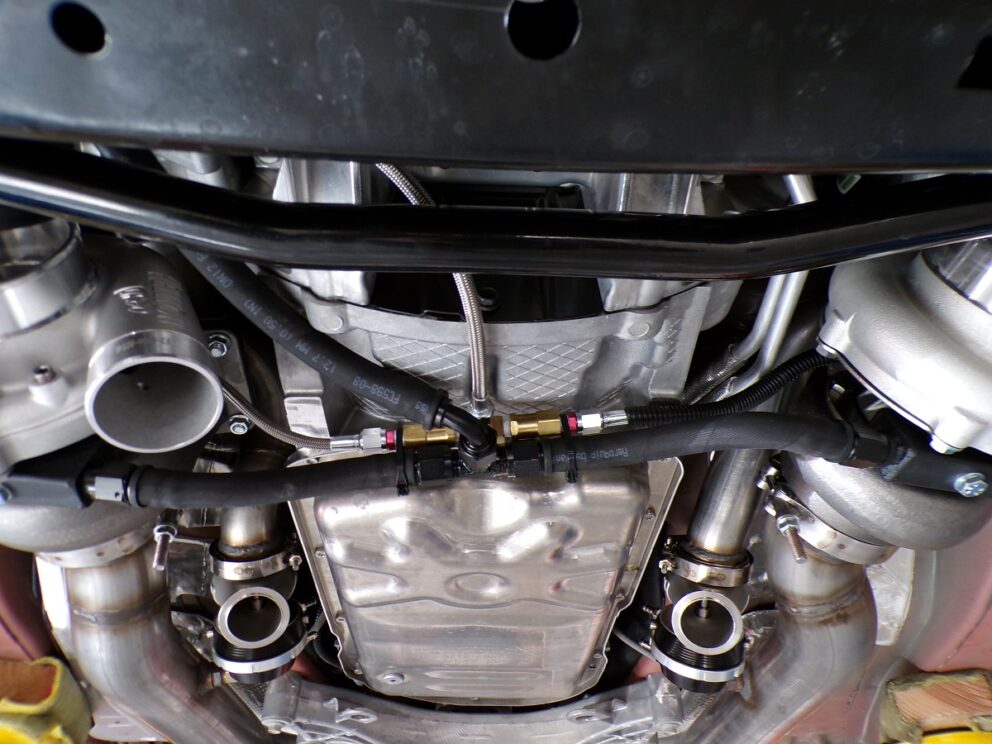
“We now have a strong factory engine, and the most efficient turbo setup available. Also installed standard with our kit is the Turbosmart Eboost2. With this controller, one can change the boost at the touch of a button. Our dyno session was actually very quick as we could go from a base of 6 psi, all the way up to 22 in a matter of back to back pulls. Nothing beats a twin turbo setup! No belts or pulleys to change.”
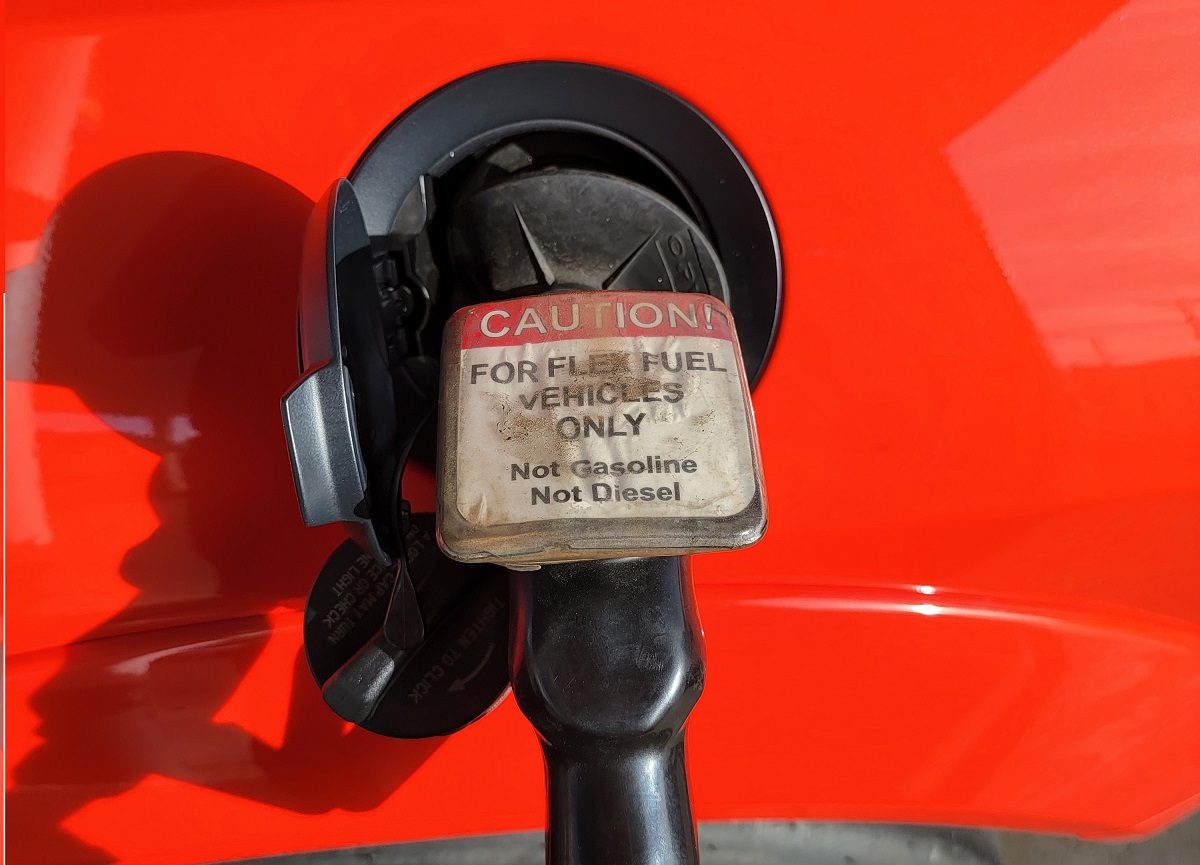
Once the turbocharging setup was installed, the 6.2-liter HEMI engine was tuned remotely by Tim Barth of Barth Tuning, using an HPTuners MVI3. All of the initial tuning and dyno runs were made with pump E85 in the tank, with the dash reading 79% alcohol content. No other major components were changed during the swap to the twin turbo setup aside from the induction system itself, the fuel system components and the tuning adjustments – and the SRT Demon 170 gained loads of power.
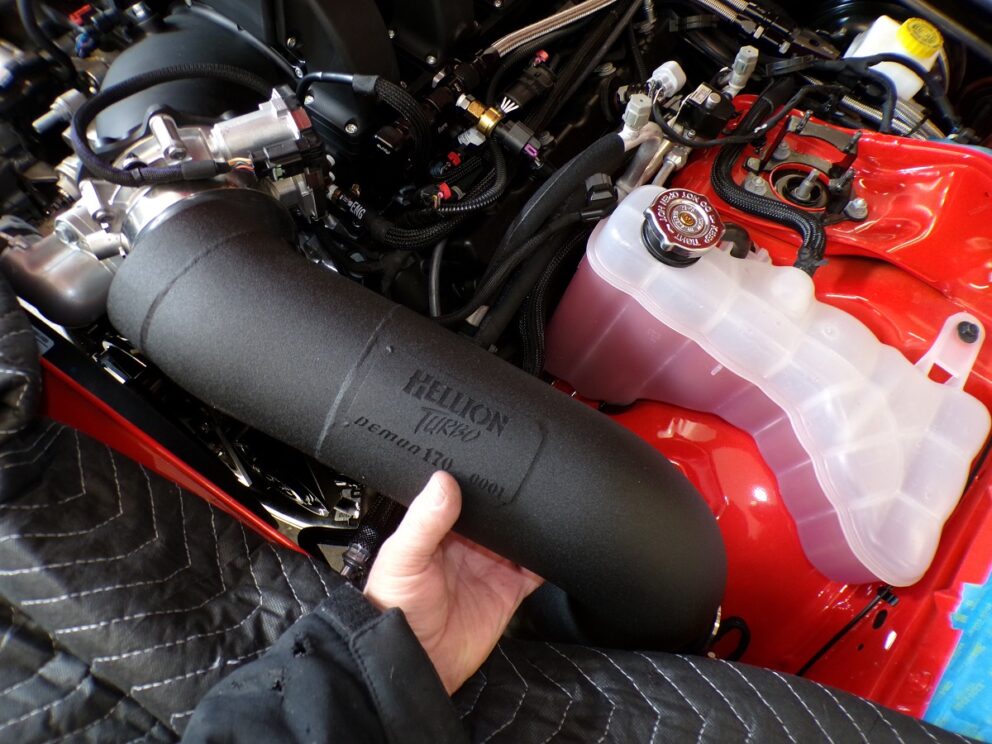
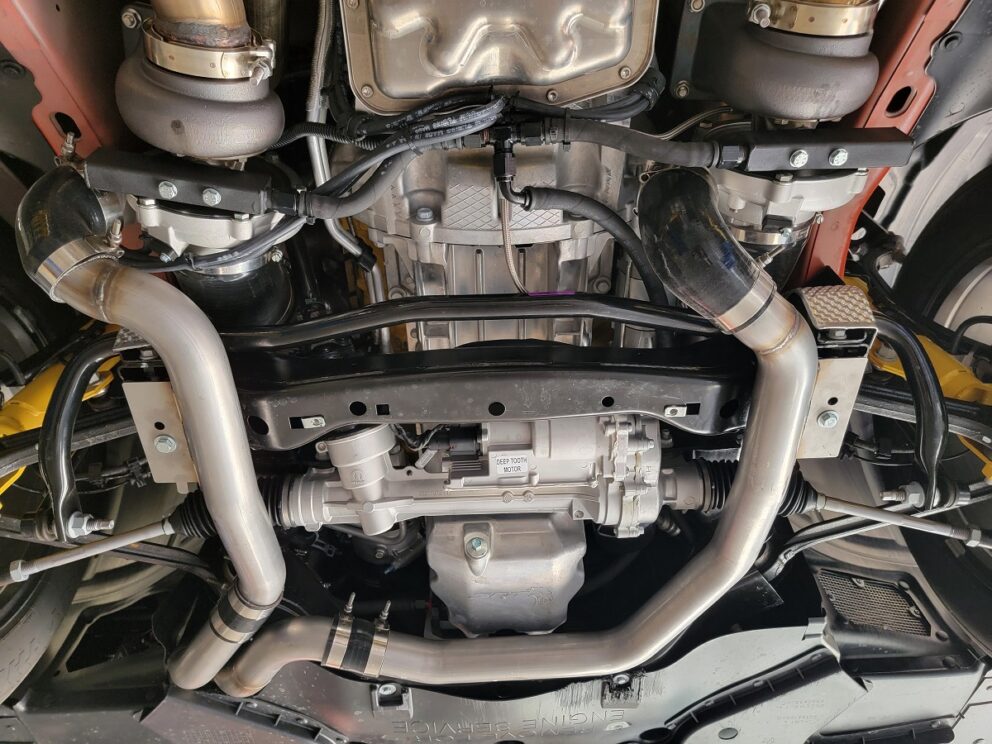
Finally, we asked John Urist if there was more room for added boost and added power, without making any other changes to the SRT Demon 170.
“We believe that there is room for more boost. Ultimately, we need to see the exact components used by the OEM to guess at total strength, but considering this platform made it through durability testing at 1,000 whp, we think that there are a few hundred hp on the table with turbos instead of a supercharger,” said Urist. “We couldn’t be happier with the install and performance. The car is a rocket ship from the factory, and we are just happy we are able to take it to the next step. In a racing environment, more power will eventually win the race, so now there is a rock solid option to max out a stock engine or a built one. We offer turbos that can supply well over 2,600 hp if needed, so every goal is on the table.”
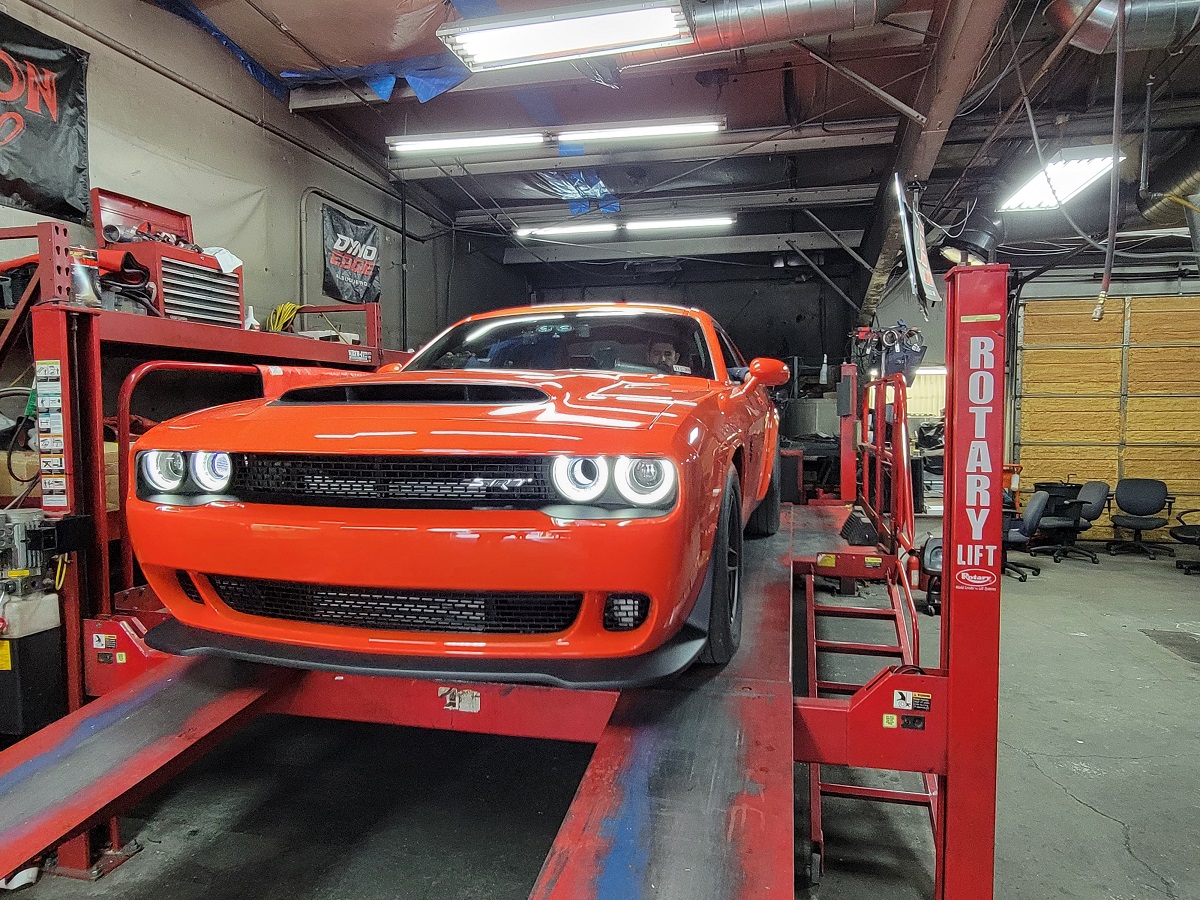
The team from 3 Demons Performance has not gotten a chance to get the world’s first turbocharged Dodge Challenger SRT Demon 170 to the track, but based on the early 8-second elapsed times that we have seen from stock cars, the extra horsepower and torque should push this muscle car into the lower-8-second range.
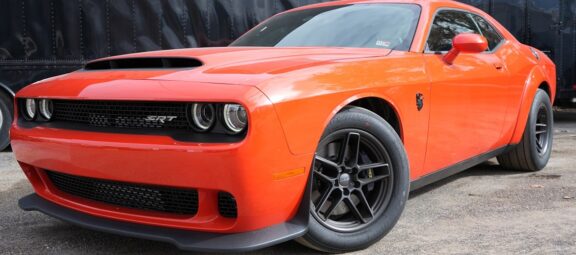
0 Comments